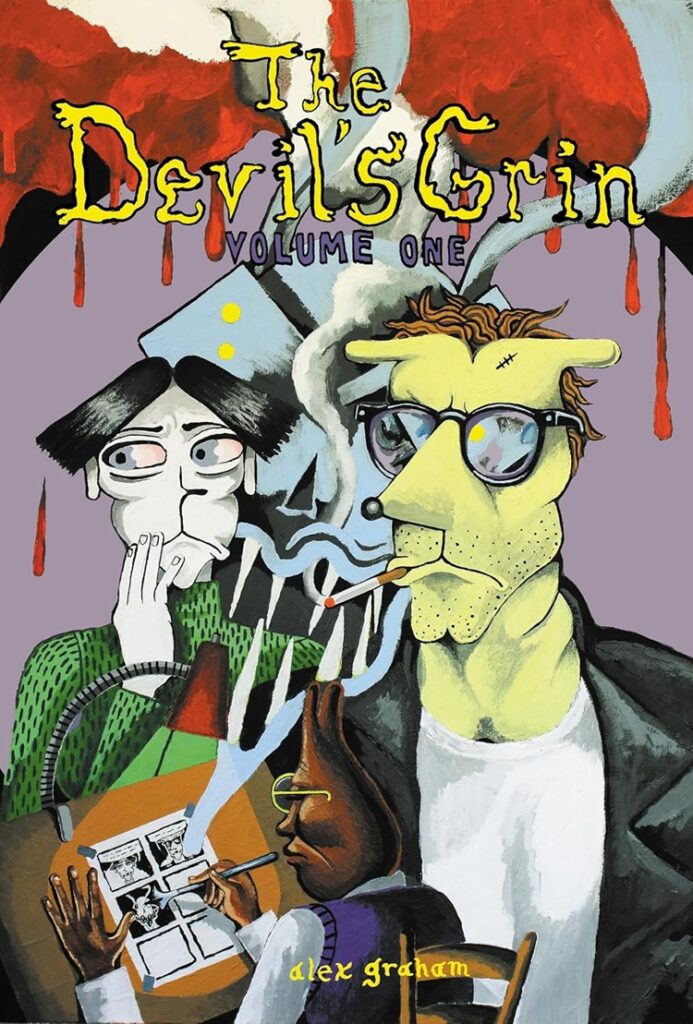
What’s black and white and red all over? Alex Graham’s second graphic novel for Fantagraphics, her follow-up to the acclaimed Dog Biscuits. Rendered in black and white with a few pages of spot red color for particularly gruesome scenes, the book follows the bizarre adventures of an abandoned child named Robert who grows into a disaffected young man devoted to little more than a good time. Along the way, he starts a relationship with a sensitive poet named Dandelion, all while thinking about the mother who abandoned him and the demon who rescued him.
Buy The Devil’s Grin: Book OneGraham anchors the bulk of the story in the 1970s, a suitably gritty and free-wheeling era that allows for Robert’s seedy shenanigans without recrimination. He blithely jumps from one girl to the next, dabbles in trying to get a band together, and enjoys legal and illegal substances with abandon. In his devastatingly harrowing origin story, his jilted mother literally flushes him away, he’s pulled out of the sewer by a demon intent on raising him to become his plaything, and he’s nursed by a giant talking rat. With such an inauspicious beginning and associated recurring nightmares, it’s no wonder that he wanders through his twenties in a perpetual haze of substance abuse and cheap women, fruitlessly searching for some semblance of contentment.
The setting isn’t the only thing centered in the 1970s. Graham’s decidedly x-rated content and delightfully loose art style feel like a direct continuation of underground comix of the era, with her a descendant of the trailblazers who made wild, uncensored art regardless of technical expertise or commercial considerations. It’s easy to imagine the story being serialized in publications such as Zap or Wimmen’s Comix, with one big difference: she clearly has a long story to tell that would have far outstripped the capabilities of their meager, sporadic output. At nearly 450 pages of story (plus bonus full-color splash pages), this is a major work, and it’s only book one, with the next installment currently in production.
Graham keeps the principal story of Robert’s life on track, but leaves some aspects open to reader interpretation. The most notable example is a shadowy background character named Gary, who seems to have the ability to draw comics that come true, leading him to make some truly unsavory choices with his artistic license. Is he directing Robert’s life? If so, why? And why does Dandelion seem to have precognition in her dreams? As Gary opines at one point: “sometimes your interpretation of an artwork, as the viewer, reveals more about you than it does about the artist’s intent.” There’s a chaotic sense of anything goes in Robert’s story, but in Graham’s capable hands, we get the strong impression that it’s definitely going somewhere.